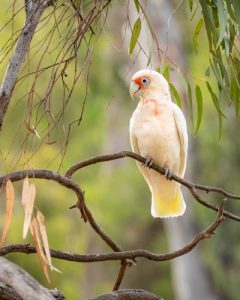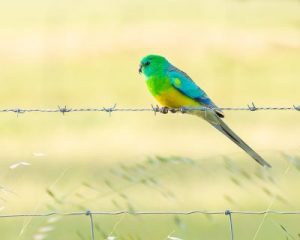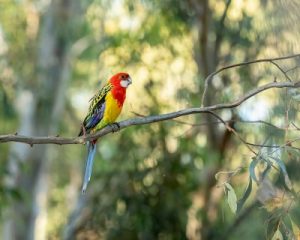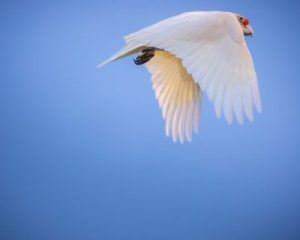Cuba has some absolutely amazing birds that make a beautiful picture. But how can you ensure that your pictures come out as great quality? Now that can be a challenges, which is why we asked our Nature Photography Expert – Lea Unwin-Smith to share with us her secrets to selecting her equipment before she heads out on a bird photography shoot.
Lea is a talented, Australian photographer, who loves nothing more than to get out into the wild to capture the beauty of the world through her lens, that she then shares with the world. She aims to evoke positive emotions through her pictures, igniting a spark of love for all amazing creatures in nature. And she does a stellar job of that!
“Its interesting to talk about equipment. Every camera and every lens can be used to capture amazing photos of anything.” – said Lea, which is great news to those of us who are starting out on our photography journey. She suggests that selecting the ‘perfect equipment’ comes down to your personal preference. What do you feel comfortable with? Because what works for you, may not be what works for someone else.
Lea currently uses a Canon 6d mark ii camera, which is by no means the top of the range. She further explains that, while it doesn’t have the fastest frames per second, with 26 megapixels, it provides great quality for closer crops of edited images.
Her favorite lens for this type of photography is the Canon L 70-200mm sometimes paired with a 2x extender to get a bit closer. ‘I like the challenge of getting as close as I can to birds’ – says Lea excitedly. And with the amazing colours and features they show, we can perfectly understand why.
Since one has to travel to Cuba from USA, it was great to hear that a tripod is not required to capture amazing photographs of birds. Because you have to do some light trekking to get to some of the spots where these beauties hide out. Lea actually pointed out that it’s deadweight to carry such equipment around, when you can get sharp images through body and lens stabilisation.
Tripods? Lenses?
If you were however to set up in one spot for some time, a tripod may be useful – ‘Tripods are a great idea if your equipment is heavy’, she suggested. It is not the way our tours set up however, so if you are joining us on a birding photography adventure, you can leave your tripod home. We go to various areas from some light hillsides to wetlands to ensure you can see most of the Cuban endemics and other delights. Whilst we are out and about you are required to carry your own equipment and be able to move around easily.
Lea suggested that you may wish to consider a second camera for birds in flight. ‘You want a camera with fast frames per second, such as a Canon 7d Mark II or the new Canon EOS R5, which can shoot up to 20 frames per second.’ She did also suggest that if you were steady enough, you could potentially capture a bird in flight with any camera. Could be a skill to master?

When you are travelling…
 When traveling there are a few things to consider, like the weight of your equipment. Not sure to carry around when you are in the field, but also as part of your luggage. Lea’s preferred travel photography gear include he iPhone, Canon 6d Mark II, a 70-200mm lens, the 2x extender, and a 16-35mm lens for landscapes, and may be a sturdy but lightweight tripod and a few accessories.
When traveling there are a few things to consider, like the weight of your equipment. Not sure to carry around when you are in the field, but also as part of your luggage. Lea’s preferred travel photography gear include he iPhone, Canon 6d Mark II, a 70-200mm lens, the 2x extender, and a 16-35mm lens for landscapes, and may be a sturdy but lightweight tripod and a few accessories.
She further explaines – ‘when choosing equipment, the larger the lens, the heavier the equipment. When wandering through a forest or field looking for birds, the lighter the better.’ She suggests that you could consider, the lighter mirrorless cameras with lighter lenses.
‘It depends on your strength, how much you want to carry, how much you want to spend. But any camera and longer focal length lens can give you great results.’ – Lea explains.
And what to do with the photos that you have taken?
Edit or not edit, that is the question…
Edit them of course. Lea says – ‘If possible take the image in RAW format and edit the photo later. If you want an “instant” photo, set your camera to take the image in both RAW and JPEG. The jpeg image is there ready for you as soon as you take the image, while you have the option of the RAW format image to post process later.’
The softwares you can use to process your images are Lightroom and Photoshop to help with the post processing. ‘There a number of other great options out there such as On1, Topaz Studio, Affinity photo, Luminar and even free software such as Gimp would do the job.’ – Lea suggests.
And if you are still wondering what equipment to get, Lea’s biggest tip is not to do with equipment, but with your skill as a photographer. ‘Get the focus right and the exposure right. Always focus on the eyes, and more specifically the eye closest to you. Practice using one-point focus. One-point focus directed to the eye will get you sharp focus every time, if you use a fast enough shutter speed.’
She further explains, ‘with todays cameras, bumping up the ISO to a higher number to get more light into the photo gives you far less noise than older cameras used too. Don’t be afraid to put the ISO up to 3200 or 6400 when in low light or closed down apertures. Its better to get a sharp, correctly exposed photo with some noise, than a clean photo that is too dark, or blurry.’
If you are ready to take your skills on a test drive, join us on our Simply Birds of Cuba Birding Photography workshop with Lea, where she can help you dive deeper into explaining how to capture the most perfect bird shot!
Let me introduce you to our amazing photography expert – Lea Unwin-Smith, who will be our lead expert on our November 2022 Nature Photography workshop.
Lea is an Australian photographer, who loves nothing more than to get out and share the beauty of the world we live in through her pictures. She goes by the “If I can make someone feel something and create emotion, my work as a photographer is complete” 😍 and Oh my, does she create powerful emotions!!!
Lea began her photographic journey back in the late 1990’s, with an entry level film SLR camera and has come a long way since as she turned her passion into creations of art and now also shares her skills with others through photo workshops.
She especially loves photographing nature and birds. Lea has the midas touch when it comes to capturing magical moments with stunning birds in the wild and bringing out the true beauty of flowers…
Join Lea on our 2022 Birding Photography Tour!



